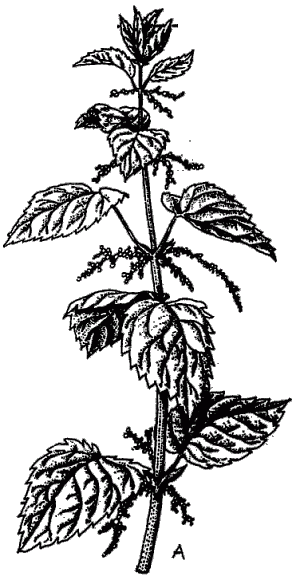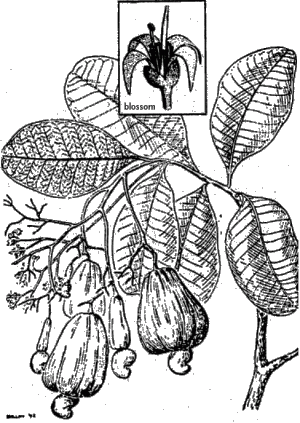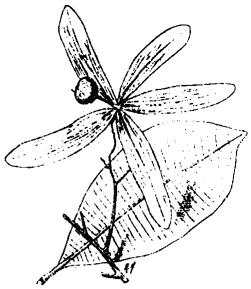attention, Tetanus prophylaxis.
Reference: Dahlgren
Stinging Nettle

Urtica dioica L.

Synonyms: Common Nettle (en), Große Brennnessel (de)
Occurrence: These and other Urtica species are widespread world-wide on waysides, in margins of forests, in residential areas, and on rubble. In the tropics only at high altitudes.
Description: Up to 1.5 m high perennial shrub with an unbranched upright stem. Blossoms greenish, blooming period from July to October in the northern temperate zone. Parts above ground are covered with stinging hairs.
Effects: Mechanical-chemical through stinging hairs. After slightly touching the plant, burning sensation and itching may occur, including reddening of the skin and perhaps blistering. The young leaves are sometimes used as vegetables, the poisonous effect disappears after cooking.
Measures: Usually none. The sap of Rumex species (Sorrel, often found near to Stinging Nettles) can be used for alleviation. Corticosteroid ointment, medical attention, Tetanus prophylaxis in severe cases.
Reference: Roth; Benezra
Similar plants: Urtica urens (also called Stinging Nettle), appearance very similarly, but only up to 60 cm and annual. More than 500 other Urtica species world-wide.
Cashew Nut Tree

Anacardium occidentale L.

Synonyms: Kaschu (de), Acaju (es)
Occurrence: Resident in tropical America but also widespread in all other tropical countries because the nuts are cultivated. This tree prefers dry ground and is usually not found in forests.
Description: Evergreen tree up to 10 m tall with leathery leaves, white blossoms with pink stripes and a fruit which consists of two parts: The upper part (the Cashew apple) is red, yellow or white and contains white edible pulp (tasting sweet and slightly peppery). The lower part of the fruit is grey and very skin- irritating. It contains the Cashew nut which is edible only after being roasted.
Effects: Chemically skin-irritating and allergizing. The plant's sap from bark, leaves and particularly the nutshell can within one day cause painful skin alterations which resemble second-degree burns. This sap is brown and oily and becomes black when exposed to the air. The fumes which emerge from roasting the nuts are skin-irritating and can even lead to blindness.
Measures: Take extreme caution when harvesting nuts or fruits and also when roasting the nuts. Corticosteroid ointment, medical attention, Tetanus prophylaxis.
Reference: Benezra; Behl; Roth; Dahlgren
Rengas

Gluta renghas L.

Occurrence: South-East Asia and India.
Description: Tree.
Effects: Allergizing and chemically skin-irritating. The smoke of the burning wood can also be dangerous.
Measures: Corticosteroid ointment, medical attention, Tetanus prophylaxis.
Holigarna

Holigarna arnottiana Hook.f.

Occurrence: Western India in evergreen forests.
Description: Tall tree, the treetop being closely covered with leaves. Leaves are large and hairless. Fleshy, oval stone fruits (drupes) in clusters. Small blossoms.
Effects: Allergizing and chemically skin-irritating. The smoke of the burning wood can also be dangerous.
Measures: Corticosteroid ointment, medical attention, Tetanus prophylaxis.
Reference: Behl
Similar plants: Melanochyla und Campnosperma act similar; they are found in the Indo-Malaysian area.
Burma Lac Tree

Melanorrhoea usitata Wall.

Synonyms: Burmese Lacquer Tree (en), Rengas (id)
Occurrence: Manipur (East India), Burma, Thailand.
Description: Tall deciduous tree, twigs and leaves hairy, blossoms white, flowering from January to March. Stone fruit (drupe) reddish and fleshy, approx. 1 cm in diameter. The tree is sometimes cultivated for the black Burma Lacquer which is gathered from the bark.
Effects: Allergizing and chemically skin-irritating. The smoke of the burning wood can also be dangerous.
Measures: Corticosteroid ointment, medical attention, Tetanus prophylaxis.

